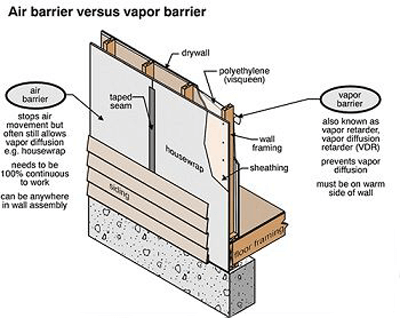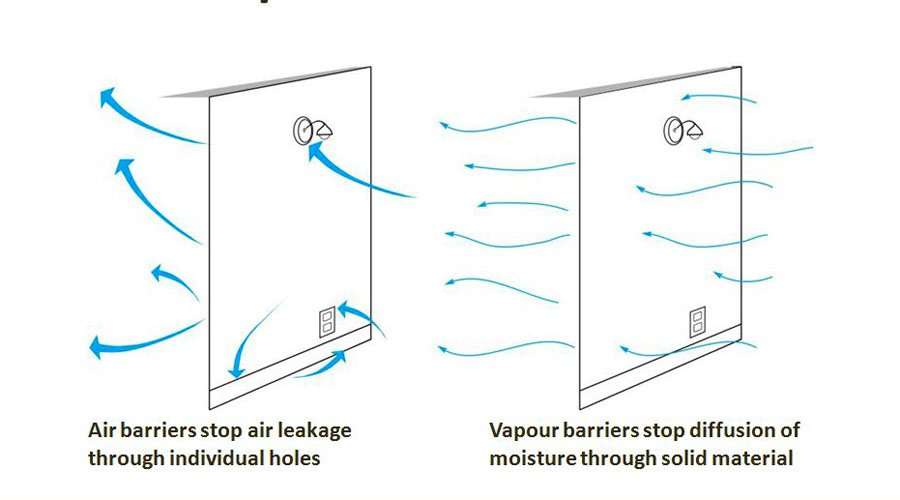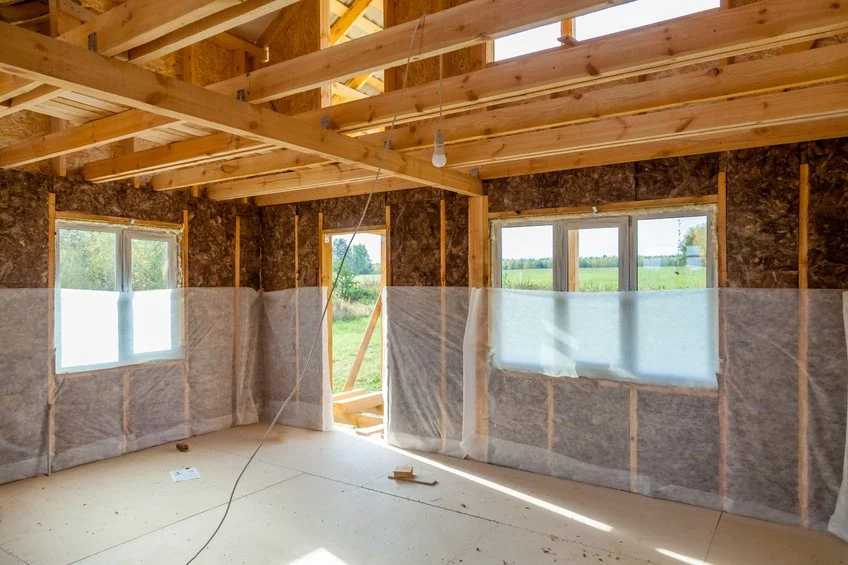There are two main possible ways moisture will pass through your walls that you should be concerned about air leakage and vapor diffusion, two completely different things, with two completely separate solutions. When do you use a vapor barrier with insulation?
If you live in a humid and hot climate, you might want to install a vapor barrier along with insulation in your walls creating an air barrier, you’ll have less humidity buildup, if you live in a cold climate, using both will work together to create thermal barriers and prevent air leaks.
Vapor barriers are protection against mold and rot inside structures by preventing condensation and moisture from building up and damaging building materials. If a home is being built in a very humid climate, a vapor barrier can be an essential source of protection from problems caused by excess moisture.
When to Use a Vapor Barrier With Insulation


If you live in humid and hot climate regions, you might want to install both a vapor barrier and insulation in your walls and create an air barrier. You’ll have less humidity buildup. If you live in a cold climate region, they can work in conjunction to create thermal barriers and prevent air leaks. In addition, the combination of a vapor barrier and insulation makes it easier to keep a consistent temperature inside your house.
Depending on where you are installing your insulation may determine if you need a vapor barrier or not. Some areas of the home that would benefit the most from vapor barriers are crawl spaces, basements, and attics.
You should always put down the vapor barrier before installing insulation. That way, you don’t end up with gaps in the insulation that can allow moisture to get into the wall gaps, and separation floor joist, or on the crawlspace floor. Once the vapor barrier is installed, then you can have your insulation installed over top of it
Vapor barriers aren’t just useful in crawlspaces and basements. They can be used anyplace you have gaps in your wall framing. For example, they can be placed in bathrooms, kitchens, garage areas, and even bedrooms.
When you install a vapor barrier, it creates a seal between the space and the outside environment. When you install insulation, it fills those gaps. So, if you have a gap in your walls, you could use both a vapor barrier and the insulation together to improve its thermal performance.
10 Steps for Waterproofing an Existing Outside Wall
What are the 10 steps for a successful solution waterproofing an existing outside Basement wall or a wall built below grade that leaks constantly when it rains .…….………………… Read more
How do you Waterproof a Basement wall from the inside?
- Prep the wall of old paint
- Wash dirt & dust off the wall
- Plug Holes & cracks with Hydraulic Cement
- Seal Openings in doors, windows & window wells using waterproof caulk
- Apply a coat of waterproof masonry cement to your wall ..……………………………………………………. Read more
Vapor barrier sheets of plastic or kraft paper stop and keep water vapor out of the wall cavity, so the insulation stays dry. Not every type of insulation needs a vapor barrier. But if it does, the barrier should face inside in the northern face direction, in heating climates, and the outside direction in humid southern climates.
No matter what type of insulation you use, be sure to add a layer of the vapor barrier to prevent condensation from developing on the inside of the attic. The vapor barrier is tasked with preventing warm, humid air from shedding its moisture as it meets up with a cool surface, no matter which direction it is traveling.

Air Barrier Vs Vapor Barrier
Vapor barriers: vapor retarders are materials used to slow or reduce the movement of water vapor through a material. Vapor barrier materials are installed on the warm side of the insulation in a building assembly, as determined by climatic conditions. In warm region climates, it will be on the exterior, and in cold climates, it will be on the building’s interior. A vapor barrier can be a fastened sheet-material or adhesive membrane.
What are the Types of Drains used to prevent water pooling?
General Drain types:
- Surface-removal of excess H2O from the surface
- Subsurface-removal of H2O from below the soil surface
- Channel Drains:
Used on impervious surfaces. - French Drains:
Use Gravel & Trench ………………………………………………………………………….. Read more
JimGalloway Author/Editor


